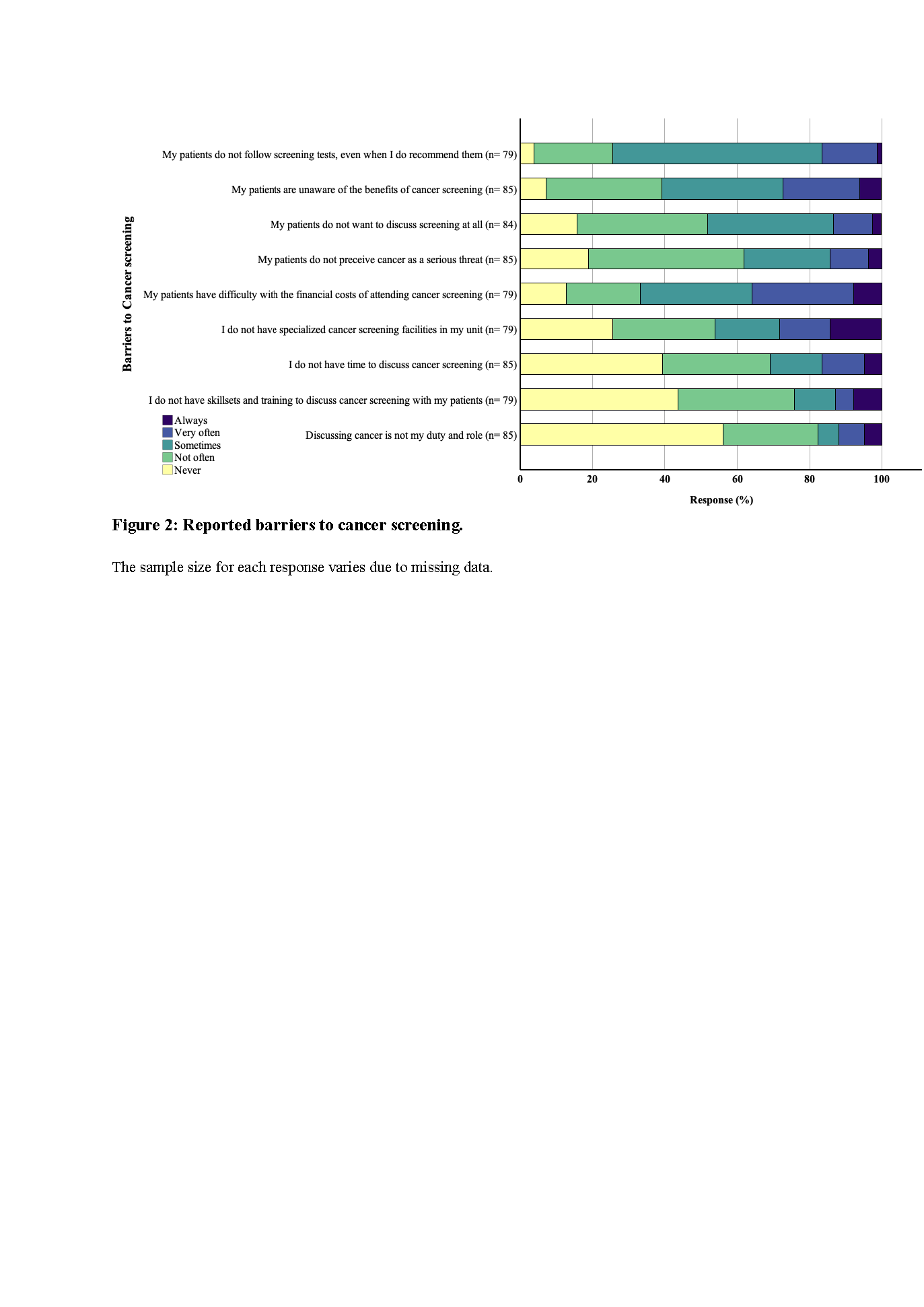Reported cancer screening practices by healthcare professionals for kidney transplant candidates and recipients
Nida Saleem1,2,3, Wai H Lim4,5, Annabelle Wilson1, Jacqueline Stephens 1,2, Billie Bonevski 1, Allison Jaure2,6, Armando Teixeira-Pinto2,6, Farzaneh Boroumand 2,6, Jonathan Craig 1, Germaine Wong2,3,6.
1College of Medicine and Public Health, Flinders University, Adelaide, Australia; 2Centre for Kidney Research, Kids Research Institute, The Children’s Hospital at Westmead, Sydney, Australia; 3Department of Renal and Transplantation Medicine, Westmead Hospital, Sydney, Australia; 4Sir Charles Gairdner Hospital, Perth, Australia; 5University of Western Australia, Perth, Australia; 6Sydney School of Public Health, University of Sydney, Sydney, Australia
Background: Cancer is a major cause of mortality and morbidity in kidney transplant recipients. Early detection through screening may allow treatment of earlier-stage cancers before they progress to advanced-stage disease. However, screening practices may vary by clinicians, transplant unit, country and recipient characteristics. In this study, we aimed to describe clinicians’ reported practices, the barriers, and the factors influencing their screening practices.
Methods: From March 2023 to February 2024, an online survey was distributed to transplant health professionals globally. Participants were identified through the Transplantation Society, the Transplantation Society of Australia and New Zealand (TSANZ), and the Australia and New Zealand Society of Nephrology (ANZSN) registers. We compared the reported screening practices against the recommended guidelines. We custom-defined the degree of concordance between reported screening practices and guideline recommendations into five categories based on the proportions of cancer screening responses. Factors that were aligned with screening recommendations were assessed using logistic regression modeling.
Results: In total, 97 of 134 responses were received; about half of the respondents were Australian residents (55.7%) in the age 31- 40 category (49.5%). Many were nephrologists (70.1%) working in urban (82.5%) transplant settings (58.9%). The majority (> 80%) reported to recommend routine breast, colorectal, and cervical cancer screening for candidates and recipients. About 85% also recommended lung cancer screening using low-dose CT chest for higher-risk individuals. Skin cancer screening recommendations varied for transplant candidates (68.6%) and recipients (83.5%). Health professionals reported a wide range of age-based screening, such as commencing breast cancer screening before 40 years (57.4%), with many recommending screenings for breast (34.1%) and colorectal (52.4%) cancers irrespective of age. Breast cancer screening reported practices were most concordant with the recommended guidelines, followed by colorectal and skin cancers. Many participants reported that financial constraints (35.4%), lack of post-transplant structured cancer screening systems (51%) and awareness (28.3%) were barriers to screening. In general, professionals from higher health resource countries were more likely to advise cancer screening (all cancer types) than those from moderately resourced countries (odds ratios varied between 3.60 and 9.53).
Conclusion: Most transplant health professionals reported recommending cancer screening for transplant candidates and recipients. Many were aware of cancer screening modalities, with few inconsistencies in their advice regarding screening frequencies, age of screening commencement, and cessation. Their patients’ financial situation and resource inadequacies highly impact cancer screening advice and need attention. Strategies that are low-cost for patients and low-resource need for health services should be explored.


[1] Kidney transplant
[2] Cancer screening
[3] Transplant candidates
[4] Transplant recipients
[5] Cancer
